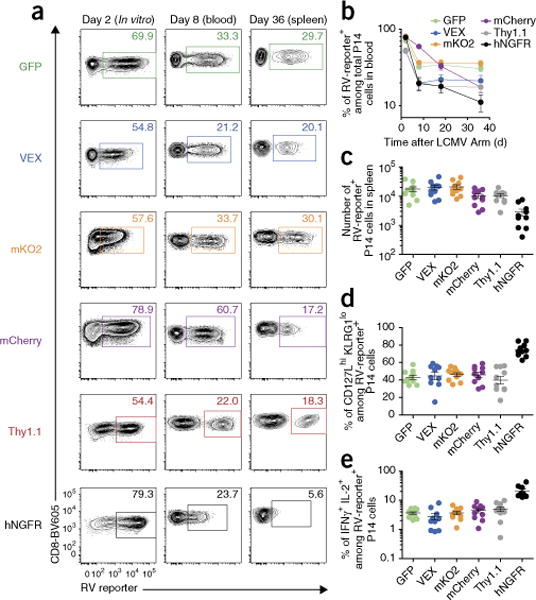Figure 6.

Comparing the utility of six different RV reporter genes for the study of CD8+ T-cell stability and memory differentiation in vivo. CD45.2+ wild-type P14 cells that were transduced with empty-GFP, VEX, mKO2, mCherry, Thy1.1 or hNGFR RV after Percoll enrichment were adoptively transferred into LCMV-Arm-infected CD45.1+ recipients as shown in Figure 1. (a) Representative flow plots gated on P14 cells showing transduction efficiency on day 2 in vitro (1 d after RV transduction, left), and frequencies of RV-transduced cells on day 8 in blood (center) and on day 36 in the spleen (right). Note that mean fluorescence intensity of hNGFR was already decreased on day 8. (b) Graph showing longitudinal frequencies of RV-reporter+ cells among total P14 cells in blood. (c) Number of RV-transduced P14 cells in the spleen on day 36. (d,e) Memory differentiation was assessed by CD127 and KLRG1 expression (d) and percentage of IFNγ+ IL-2+ cells upon gp33 peptide re-stimulation (e) on day 36. All data in Figure 6 are representative of two independent experiments (n = 9–10 per group). Mean ± s.e.m. All animal experiments depicted in Figure 6 were performed in accordance with the institutional animal care and use guidelines of the University of Pennsylvania.
